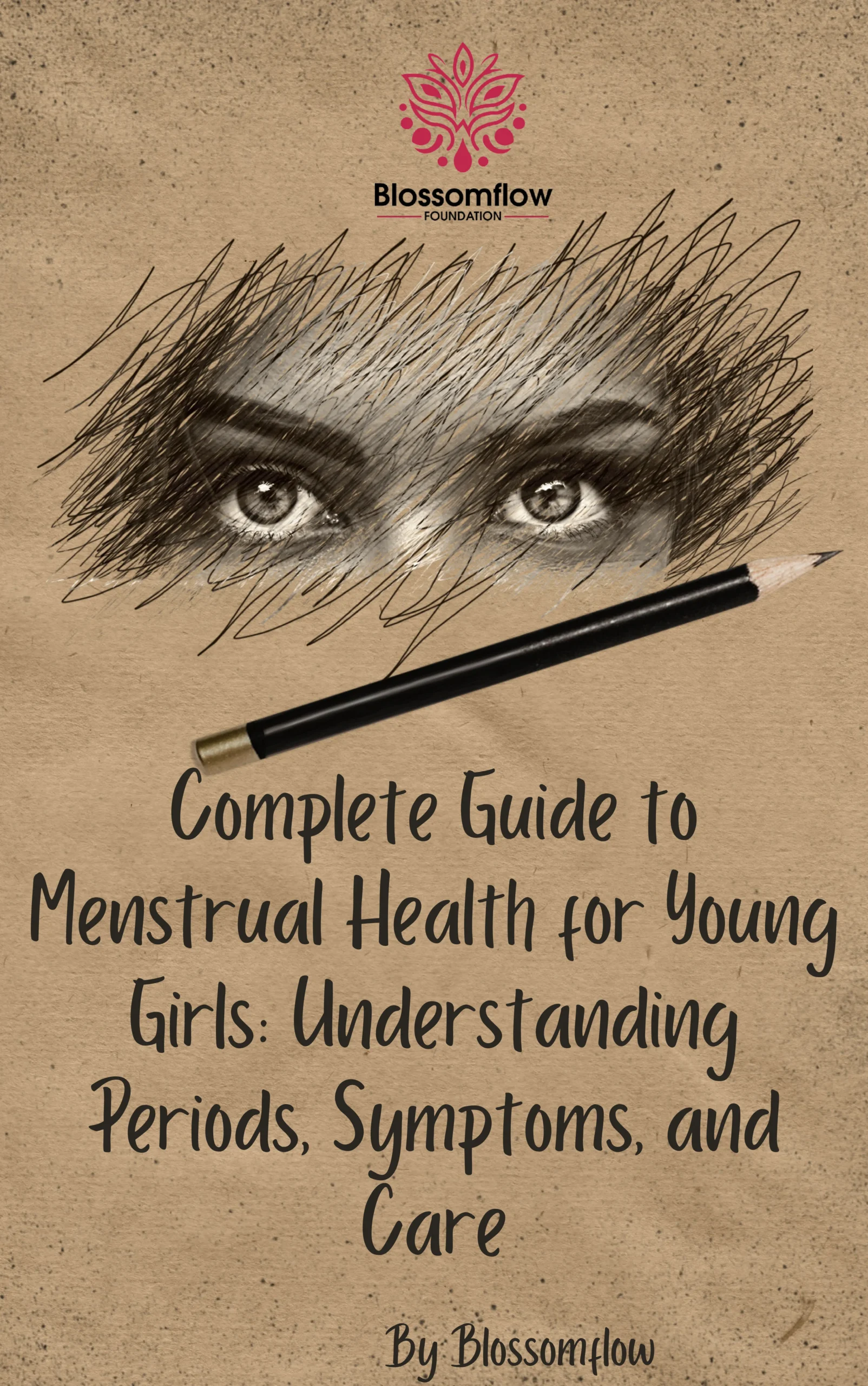
Complete Guide to Menstrual Health for Young Girls: Understanding Periods, Symptoms, and Care
Introduction to Menstrual Health for young Girls
Menstrual health for young girls is an essential aspect of their overall well-being, yet it remains a topic clouded with myths and misconceptions. Understanding periods is crucial not only for the girls experiencing it but also for their families and communities. Proper education about the menstrual cycle can help alleviate fears and build confidence, enabling young girls to navigate this natural process comfortably.
Why Education on Menstrual health for young girls is Crucial
Educating young girls about menstrual health empowers them to understand and embrace the changes their bodies are going through. It also equips them with the knowledge to manage their periods hygienically and confidently, reducing the risk of infections and promoting overall health. Beyond physical health, it plays a vital role in mental well-being, helping to dismantle the stigma often associated with menstruation and allowing for open conversations.
Overview of the Menstrual Cycle and Puberty
The menstrual cycle is a series of changes that prepare the female body for potential pregnancy. It usually begins between ages 9 and 16, signaling the onset of puberty. The menstrual cycle is controlled by hormones that regulate the development of eggs in the ovaries and the preparation of the uterus for a potential pregnancy. Understanding the menstrual cycle can help girls anticipate their periods and manage them more effectively, contributing to their sense of self-control and body awareness.
Common Questions About Menstrual health for young girls
When Will I Get My First Period?
The first period, or menarche, is a significant milestone in a girl’s life. It generally occurs about 2 to 3 years after the onset of puberty, marked by changes such as breast development and the growth of pubic hair. The timing of menarche varies widely among individuals and is influenced by factors like genetics, health, and nutrition. It is perfectly normal for girls to start their periods as early as age 9 or as late as 16.
How Long Does a Menstrual Cycle Last?
A typical menstrual cycle lasts between 21 and 34 days, but it may take several years for cycles to become regular. Early on, periods may be irregular, with some menstrual cycle being shorter or longer than average. By adulthood, most women have a more predictable menstrual cycle that usually lasts around 28 days. It’s important for young girls to understand that irregular periods in the first few years are common and usually not a cause for concern.
What to Expect During Your Period?
During menstruation, the body sheds the lining of the uterus, resulting in bleeding through the vagina. The duration of this bleeding can vary, typically lasting between 2 and 7 days. It’s normal to experience symptoms such as mild cramps, bloating, and mood swings. Understanding what to expect during a period can help girls manage their symptoms and prepare for their monthly cycle.
Understanding Periods
What Does a Period Look Like?
The menstrual flow is a mixture of blood and tissue from the lining of the uterus. It can vary in color and consistency throughout the period. The flow may start off light and pink, turn red, and then become brown towards the end. These variations are normal and do not indicate any health issues. Girls should be encouraged to track their periods and note any significant changes to discuss with a healthcare provider.
How Much Bleeding is Normal?
Most girls lose about 4 to 6 teaspoons of blood during their period, although it may feel like more. The flow can be light, moderate, or heavy, and may change from day to day. It’s common for the flow to be heavier in the first few days and lighter towards the end. If a girl experiences very heavy bleeding that soaks through a pad or tampon every hour, she should seek medical advice.
Signs of Abnormal Bleeding and When to Seek Help
While some variation in period length and flow is normal, there are certain signs that may indicate a problem. If periods are very painful, last longer than 8 days, or involve bleeding between periods, it’s important to consult a healthcare provider. Abnormal bleeding can be a sign of conditions such as polycystic ovary syndrome (PCOS) or thyroid disorders, which require medical attention.
Menstrual Health and Hygiene
Choosing the Right Menstrual Products
There are various menstrual products available, including pads, tampons, and menstrual cups. Each has its pros and cons, and the choice largely depends on personal preference and comfort. It’s important for young girls to learn how to use these products correctly and change them regularly to maintain hygiene and prevent infections.
Importance of Maintaining Hygiene During Periods
Maintaining good hygiene during periods is crucial to prevent infections and discomfort. Girls should be taught to change their menstrual products every 4 to 6 hours, wash their hands before and after changing products, and keep their genital area clean and dry. It’s also helpful to wear breathable, cotton underwear to reduce the risk of irritation.
How to Manage Menstrual Pain
Menstrual cramps are a common symptom that can range from mild discomfort to severe pain. To alleviate cramps, girls can try applying a heating pad to their lower abdomen, taking over-the-counter pain relief, or engaging in light exercise. Drinking plenty of water and eating a balanced diet can also help reduce menstrual discomfort.
Debunking Myths and Misconceptions
Can I Get Pregnant During My Period?
It is a common myth that girls cannot get pregnant during their period. While the likelihood of pregnancy is lower, it is still possible, especially if a girl has a shorter cycle. Sperm can live in the body for up to 5 days, so if ovulation occurs soon after the period ends, conception can happen. It’s important to use protection during sexual activity to prevent unintended pregnancy and sexually transmitted infections.
Do Boys Experience Similar Changes?
While boys do not menstruate, they go through their own set of changes during puberty. These include the development of facial and body hair, voice changes, and growth spurts. Boys may also experience mood swings and feel self-conscious about their changing bodies, similar to what girls experience during puberty.
Addressing Common Misunderstandings
There are many misconceptions about menstruation, such as the idea that periods are dirty or that they should be kept secret. It’s important to challenge these myths and encourage open, honest discussions about menstrual health. Doing so can help reduce the stigma and make it easier for girls to seek support and information.
Importance of Open Communication
Talking to Parents or Guardians About Menstrual Health
Having open conversations with parents or guardians about menstruation can provide young girls with much-needed support and guidance. Parents should create a safe space for their daughters to ask questions and express their concerns. This can help build trust and ensure that girls feel comfortable seeking help when needed.
Seeking Professional Guidance When Needed
If a girl has concerns about her menstrual health or experiences symptoms like severe pain or irregular bleeding, it’s important to seek professional advice. Healthcare providers can offer information, reassurance, and treatment options to manage any issues related to menstruation.
All Categories
Recent Posts
The Link Between Poor Sanitation Facilities, Infrastructure Development & Period Poverty
When Your Period Hits Hard: Menstrual Cramps Self-Care
True Stories of Period Poverty From Africa
Tags
Give them a helping hand
Every donation fuels our mission to combat period poverty. Your generosity brings us closer to menstrual equity.
+234-909-482-1642
inquiries@blossomflow.org




